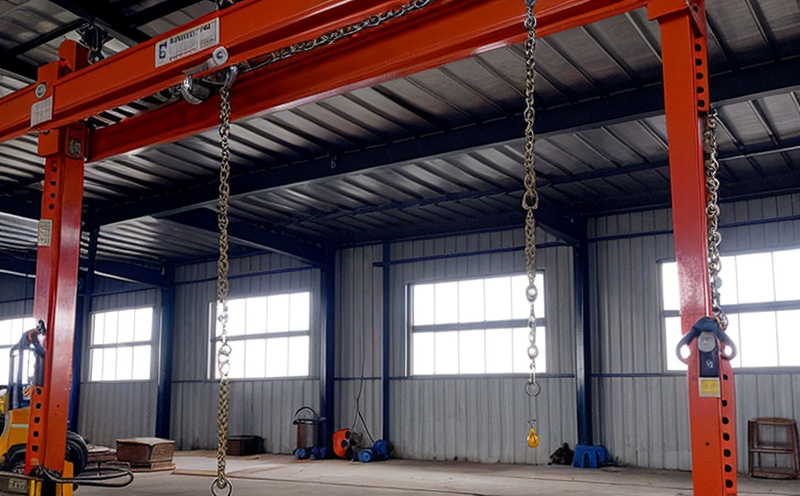Manual chain hoist inspection
The manual chain hoist is a fundamental component in industrial lifting and handling systems. These devices are essential in environments where precision, reliability, and safety are paramount, such as manufacturing facilities, warehouses, construction sites, and maintenance workshops.
A manual chain hoist inspection involves a comprehensive evaluation of the hoist's structural integrity, mechanical components, and operational characteristics to ensure it meets the highest standards for safe operation. This process is critical in preventing accidents and prolonging the lifespan of equipment.
During an inspection, several key aspects are evaluated:
- Cable and Chain Condition: Inspection includes checking for wear, corrosion, or damage to the lifting cable and chain. The integrity of these components is crucial as they bear the load during operation.
- Gearbox Lubrication: Ensuring adequate lubrication within the gearbox is vital for smooth operation and longevity. Insufficient lubrication can lead to overheating or gear failure, affecting safety and efficiency.
- Pawl and Clutch Mechanism: The pawl ensures that the chain does not slip when in use, while the clutch mechanism allows for easy manipulation of the load. Any malfunction here could compromise lifting operations.
The inspection process also involves assessing the hoist's environmental factors such as exposure to extreme temperatures or corrosive substances. Proper maintenance and timely replacement of worn parts are crucial in preventing accidents and ensuring compliance with safety standards.
For a more detailed understanding, consider the following table that outlines some of the international standards applicable to manual chain hoist inspection:
| Standard | Description |
|---|---|
| ISO 4382 | Specification for chain hoists with electric drive. |
| ASTM F1752-09 | Standard practice for inspection and testing of manual chain hoists. |
| EN 369:2008 | Manual chain hoists - Particular requirements for the design, manufacture, and marking. |
| IEC 61450-1:2004 | Electrical equipment in lifts and escalators - Part 1: General requirements. |
The inspection process is not only about checking the visible components but also involves a thorough examination of the hoist's operational history. This includes reviewing past maintenance records, identifying common failure points, and addressing any issues that have been previously reported or observed.
Regular inspections are essential to maintain compliance with regulatory requirements such as OSHA (Occupational Safety and Health Administration) in the United States, which mandates regular testing of lifting equipment. By adhering to these standards, businesses can ensure a safe working environment while minimizing potential risks associated with improper operation or maintenance.
In conclusion, manual chain hoist inspection is more than just a routine check; it's an integral part of ensuring operational safety and efficiency in heavy-duty lifting applications. Properly conducted inspections help extend the life of equipment, reduce downtime, and safeguard personnel working in potentially hazardous environments.
Applied Standards
The inspection of manual chain hoists is governed by several international standards that provide guidelines for ensuring their safe operation. Here are the key standards applicable to this service:
| Standard | Description |
|---|---|
| ISO 4382:2017 | Specification for chain hoists with electric drive. |
| ASTM F1752-09 | Standard practice for inspection and testing of manual chain hoists. |
| EN 369:2008 | Manual chain hoists - Particular requirements for the design, manufacture, and marking. |
| IEC 61450-1:2004 | Electrical equipment in lifts and escalators - Part 1: General requirements. |
The standards outlined above are crucial for ensuring that manual chain hoists meet the necessary safety criteria. They provide detailed specifications on testing methods, acceptance criteria, and the design parameters required to ensure safe operation of these devices.
Industry Applications
The inspection of manual chain hoists plays a vital role across various industries where heavy lifting is essential. Here are some key applications:
- Manufacturing: In production lines, precision and safety are critical. Regular inspections ensure that the equipment operates reliably without compromising quality or causing accidents.
- Construction: On construction sites, manual chain hoists are used for lifting heavy materials such as steel beams and machinery. Ensuring their integrity is essential to prevent injuries and structural damage.
- Maintenance and Repair: In repair workshops, these devices are used for moving large components or parts that require precise positioning. Routine inspections help maintain high standards of safety during maintenance activities.
- Warehousing: In warehouse environments, manual chain hoists facilitate the movement of heavy pallets and cargo units efficiently. Proper inspection ensures smooth operations without disruptions due to equipment failure.
The versatility of these devices makes them indispensable in many sectors where efficient lifting is required. By adhering to strict inspection protocols, businesses can ensure that their manual chain hoists are always in optimal condition, thus supporting the overall productivity and safety of the workplace.
Why Choose This Test
The importance of a thorough manual chain hoist inspection cannot be overstated. Here’s why choosing this service is essential:
- Safety Compliance: Regular inspections ensure that the equipment complies with all relevant safety regulations and standards, reducing the risk of accidents in the workplace.
- Equipment Longevity: By identifying and addressing potential issues early, the lifespan of the manual chain hoist can be extended significantly. This reduces the frequency of replacements and associated costs.
- Risk Mitigation: Preventive maintenance through inspections helps minimize risks associated with equipment failure during critical operations, such as lifting heavy loads or operating in hazardous environments.
- Operational Efficiency <|im_start|><|im_start|>⚗️





